The Rising Tide for Floating Communities
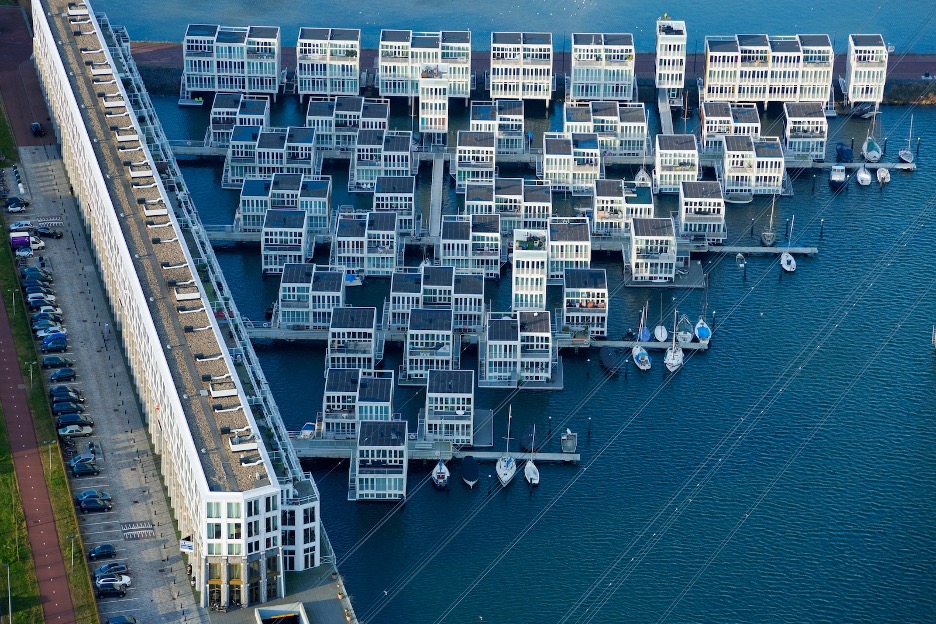
By Reed Rowley
The concept of the floating metropolis has lived as a science fiction concept ever since French author Jules Verne described them in his novel The Floating City in 1871. Since then, the idea of the large modern floating municipality has been parked on the scientific and engineering backburner. Today there are more people living in Antarctica than in modern floating communities around the world. However, with the twin pressures of population density and climate change causing sea levels to rise, serious attention is being refocused on reimagining and reinventing floating communities as a solution to the challenges of today and tomorrow. The question is, can we overcome the engineering, legal, and economic hurdles to make it happen on a meaningful scale.
A World of Trouble
Since 1880, average sea levels have swelled over 8 inches with about three of those inches gained in the last 25 years. The current rate of sea level rise is .13 inches per year and new research published on February 15, 2022 shows that sea level rise is accelerating and projected to rise by a foot by 2050.
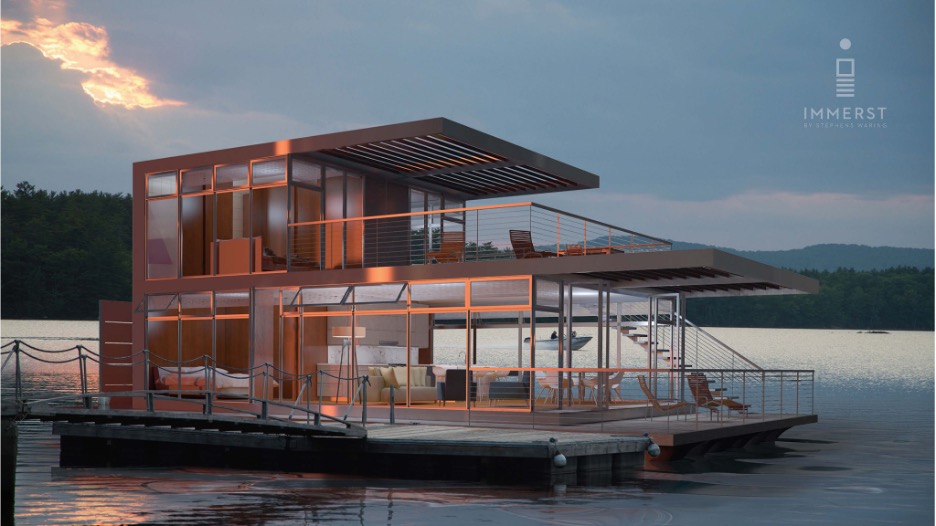
That’s bad news for the over 3 billion people who live in coastal areas across the globe who comprise nearly 40% of the global population. It is projected that over the next 80 years over 400 million people will be directly affected by rising oceans, but the spillover to the global economy and disruption to manufacturing, farms, and real estate will affect us all.
The impact of these rising sea levels is already being felt. Bangladesh, which comprises an area smaller than the state of Illinois, is home to 165 million people. One-third of them live along the southern coast, a lush honeycomb of island villages, farms, and fish ponds linked by protective embankments. Most of the country’s land area is no higher above sea level than New York City, and during the rainy season more than one-fifth of the country can be flooded at once. For the past decade, nearly 700,000 Bangladeshis have been displaced on average each year by natural disasters. Increased sea levels and flooding also regularly impacts and displaces thousands of coastal dwellers in China, Thailand, and Indonesia. Many Pacific Island Nations already face an existential threat as they plead for help and attention as their countries recede into the sea.
In the US, 40% of the U.S. population lives within 60 miles of the shore. The most vulnerable populations live on the East and Gulf Coasts, where damaging flooding is predicted to occur 10 times more often in 2050 than it does today. Already much of coastal Louisiana is disappearing into the Gulf of Mexico due to coastal erosion and sea level rise. The Isle de Jean Charles which once encompassed more than 22,000 acres today only has 320 acres remaining.
New York City is building a $335 million flood protection system in Manhattan after the city suffered $19 billion in damages from Hurricane Sandy. California just proposed its first legislation to address sea level rise as estimates speculate that there will be more than $150 billion worth of property at risk of flooding by 2100 if global temperatures continue to rise.
Traditional Solutions
Across the globe government planners are racing to find and implement solutions to address the immediate and mounting future challenges. These solutions include raising roads, building beaches as barriers, building stormwater pumps, upgrading septic systems, and creating natural infrastructure (barrier islands, oyster and coral reefs, mangroves, seagrass and salt marshes).
In some cases government officials are resigned to the fact that the only solution is simply to pull up roots and relocate. In fact, it’s become common enough that a new term has been coined: Managed Retreat. The strategy is already being implemented in Virginia, one of the hardest hit areas of sea rise on the East Coast.
But beyond the dichotomy of multi-million dollar infrastructure projects and allout retreat there is a design solution with an ancient past and substantial future potential.
Enter the Floating Home – A brief History:
While we may look at the prospect of a modern floating metropolis as a work of science fiction, the reality is that communities around the world have integrated floating homes into their cultural fabric for thousands of years, and many still do.
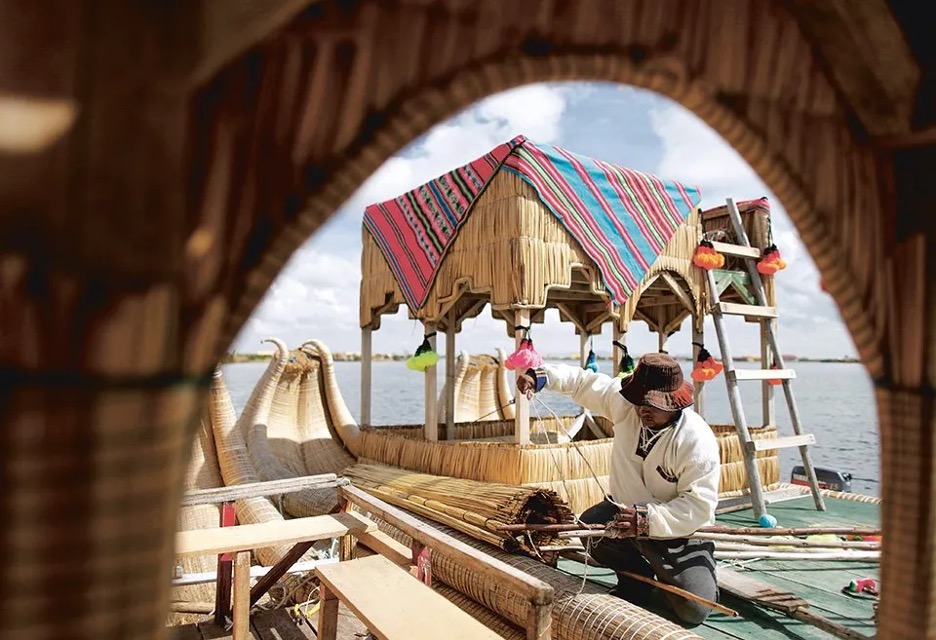
In Peru, the Uros are the only civilization to live directly on lake Titicaca. Their community is made up from man-made floating islands, which are home to nearly 3,000 people. Each island contains 1-15 thatched homes, which compose over 90 islands. Constructed from totora reeds, the islands are anchored with rocks and rope to the lake bottom so they can be picked up and moved as needed.
The Ma’dan people live in an area known as Iraq’s Garden of Eden and the Mesopotamian Venice. Located at the confluence of the Tigris and Euphrates rivers, their community consists of hundreds of man-made, natural, free-floating islands designed to rise with the waters of the marsh. Their village structures are constructed using locally sourced qasab reeds and are built without any modern material such as wood, glass, nails, or steel.
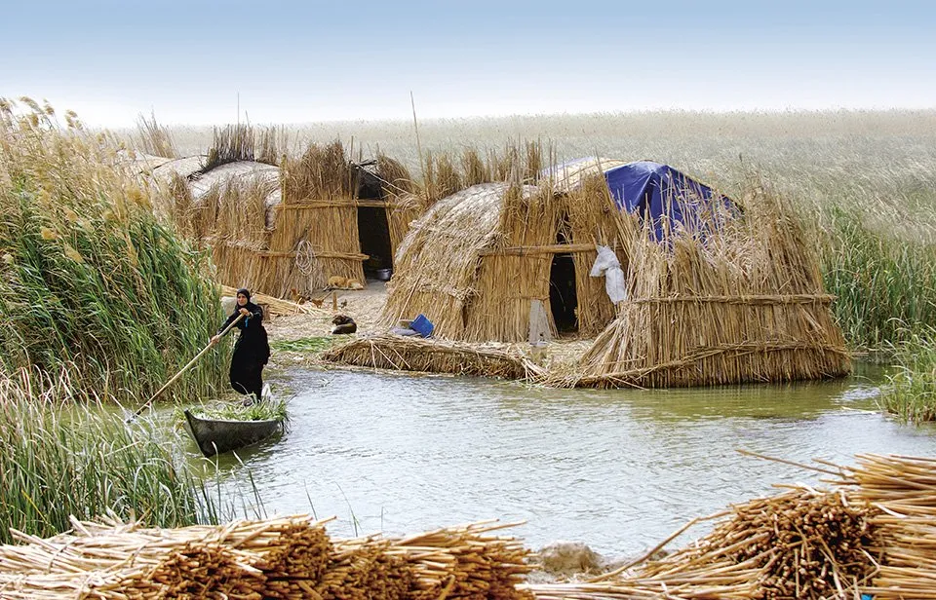
In Benin, Africa, a stilted house community called Ganvie contains over 12,000 fish paddocks that form artificial reefs which produce enough food to feed 1 million people. And in Bangladesh, communities have built floating farms that rise with storm surges and floods preserving harvests through even the worst natural disasters.
Benefits of the Modern Floating Community
Around the world indigenous people have built floating communities as a solution to managing challenging climates, seasonal flooding and natural disasters. These ancient-rooted anthropological “design hacks” can be applied to solving our current climate and population pressure challenges, especially when combined with cutting-edge technology and innovation.
Key Features of The Modern Floating Homes
High-tech Mooring and Stilts Mitigate Storm Surge and Flooding
Storm surges are simply onslaughts of ocean water that get pushed onto shore by strong winds. A 2014 study by National Hurricane Center Deputy Director Ed Rappaport found that just under half of the fatalities Atlantic tropical hurricanes caused from 1963 to 2012 were attributed to storm surges. It was the largest cause of death when Hurricane Katrina hit in 2005. Most deaths occurred by drowning.
Because floating homes are able to rise and fall with the water on specially engineered mooring or stilt systems, units can simply ride out a storm without incurring any major damage.
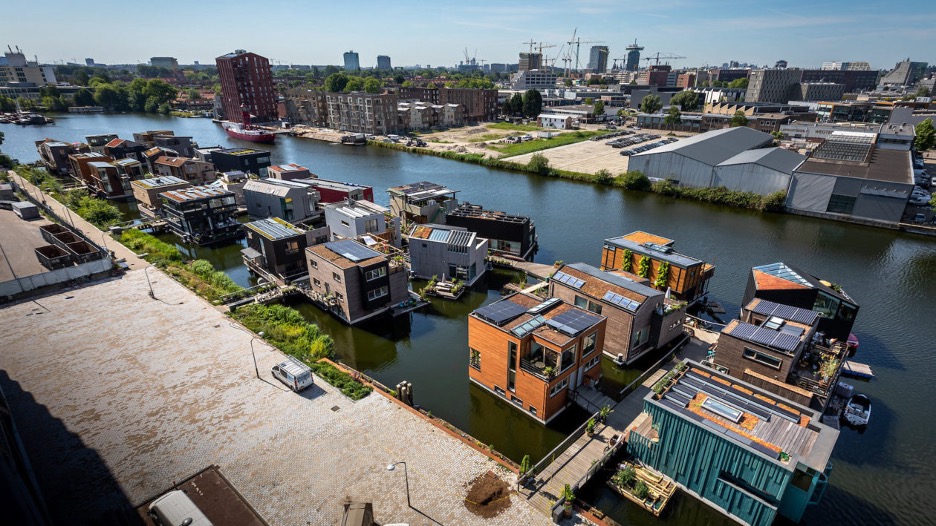
High Efficiency Heating and Cooling
Living on the water has a number of heating and cooling efficiencies. In the summer, water and consistent sea breezes provide a cooling effect. In the winter the stable temperature of the ocean provides a source of heat. Modern floating community designs are also integrating heat pumps and smart grid infrastructure that can be combined with renewable energy sources to provide maximum efficiency for communal HVAC systems.
Energy Production:
Harvesting energy from wind at sea is more efficient than on land because of the more constant winds and tidal flows. Site specific energy production including tidal and wave generators can be combined with solar to create stable and reliable renewable energy sources that exceed available resources on land.
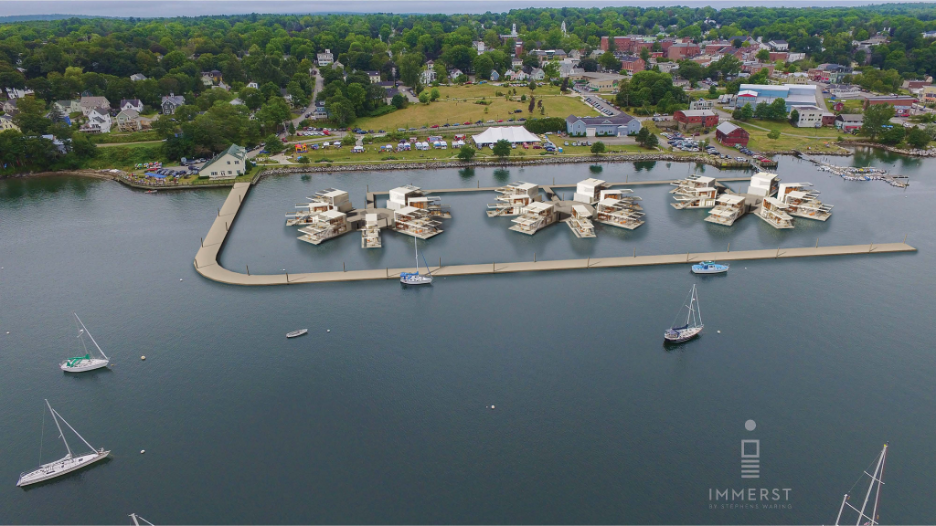
Flexible Waste Collection and Utilities
One of the biggest concerns of floating communities is their impact on the surrounding ocean environment. This is particularly apparent when it comes to the handling of waste. Modern floating homes and communities have the option to be connected to city utilities infrastructure or operate off-grid.
When off-grid, modern waste and septic collection systems can minimize the risk of environmental contamination and new waste disposal technologies can even convert sewage into an innovative energy source.
Building on Underutilized Property
Unique to the floating community concept is to develop locations that have limited traditional development potential. Floating communities can be established in harbors and lagoons that are too shallow for marinas or boat passage. They can also be placed near or far offshore in locations that have little maritime commercial traffic or impact on existing residential or commercial interest.
From a sea level rise perspective, floating homes can be placed on the footprint of structures that may be underwater or placed in areas that are highly susceptible to storm surges and flooding.
What’s Next for Floating Communities
As the need and potential for floating communities becomes more apparent many companies, including Stephens Waring, have jumped into the deep end of trying to design the best floating home and floating community concepts. Companies like Blue21 are imagining floating micronations, self-contained, and composed of thousands of residents.
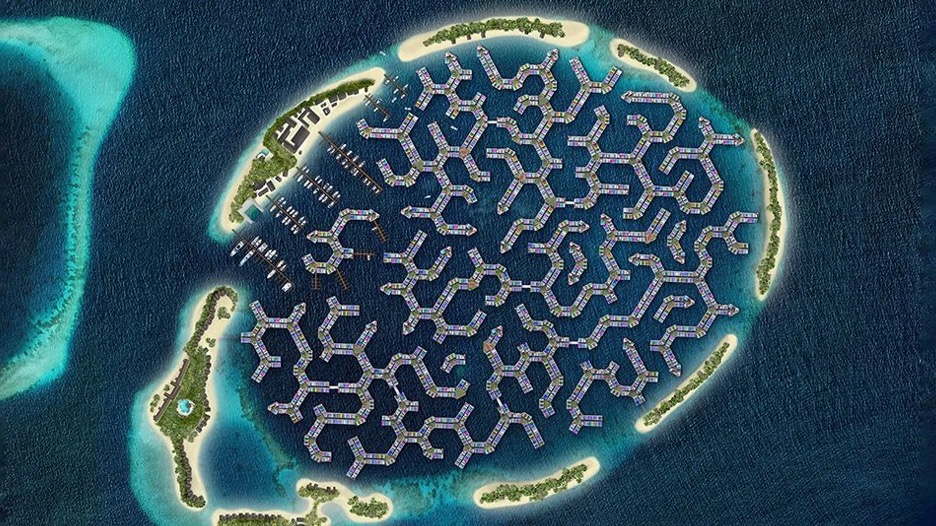
Other designers have identified floating factories and farms as solutions for food production and agriculture, especially if a symbiosis is created between cities on land and floating developments on water.
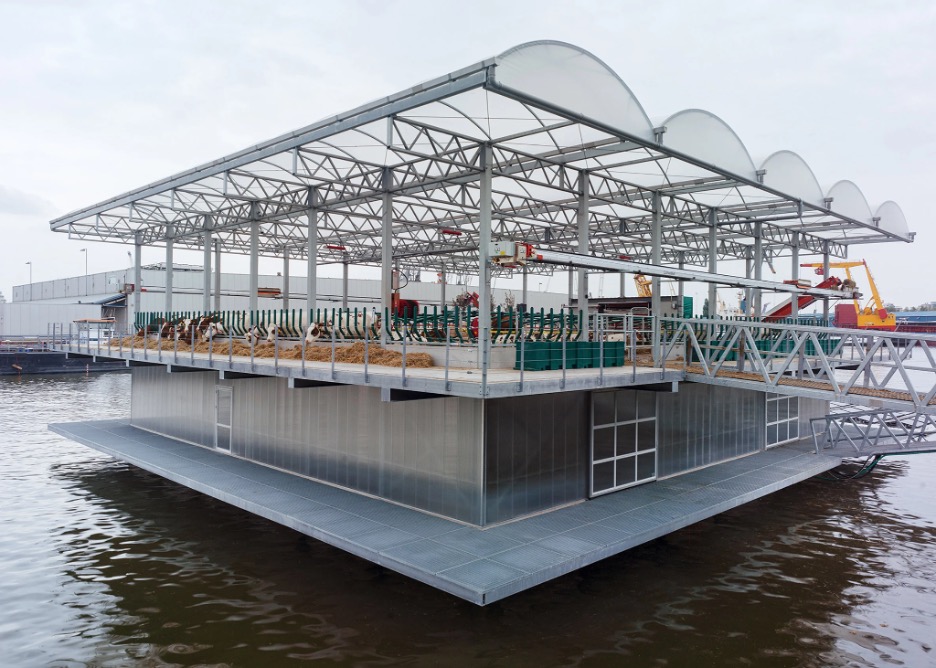
Government officials in the island nation of the Maldives, arguably the lowest lying country on earth, officially unveiled plans to build the first fully floating island city of its kind. Designed by Dutch architects WaterStudio.NL, The Maldives Floating City will include thousands of individual residences that float on hexagonal artificial-coral clusters. The designers tout the advanced technology which includes smart grid technology and efficient design planning to establish a symbiotic relationship between the community and the lagoon ecosystem. Developers plan to “break sea” this year, with prices beginning at $250,000 per unit.
The Now
While the potential for floating homes and communities is being recognized and explored each day, there remain substantial obstacles to new floating developments in our own backyard. In particular, the US lags behind Europe and much of the world in creating a legal and financial framework required for major investment. What existing communities there are in places like Portland and Seattle have faced increased regulatory pressure and have remained frozen in size for years.
However, the increased demand for coveted shoreline and skyrocketing real estate prices makes floating real estate an increasingly economical model. What remains needed is the entrepreneurial chutzpah that we’ve seen in the private space race to finally muscle through the legal and bureaucratic challenges that are holding things back. Fortunately (or unfortunately) the tides of change seem inevitable and so the reality of new floating communities in the US and around the world may be coming sooner than we think.
Related Stories and Resources
Against All Odds Shelter Island Can Expand